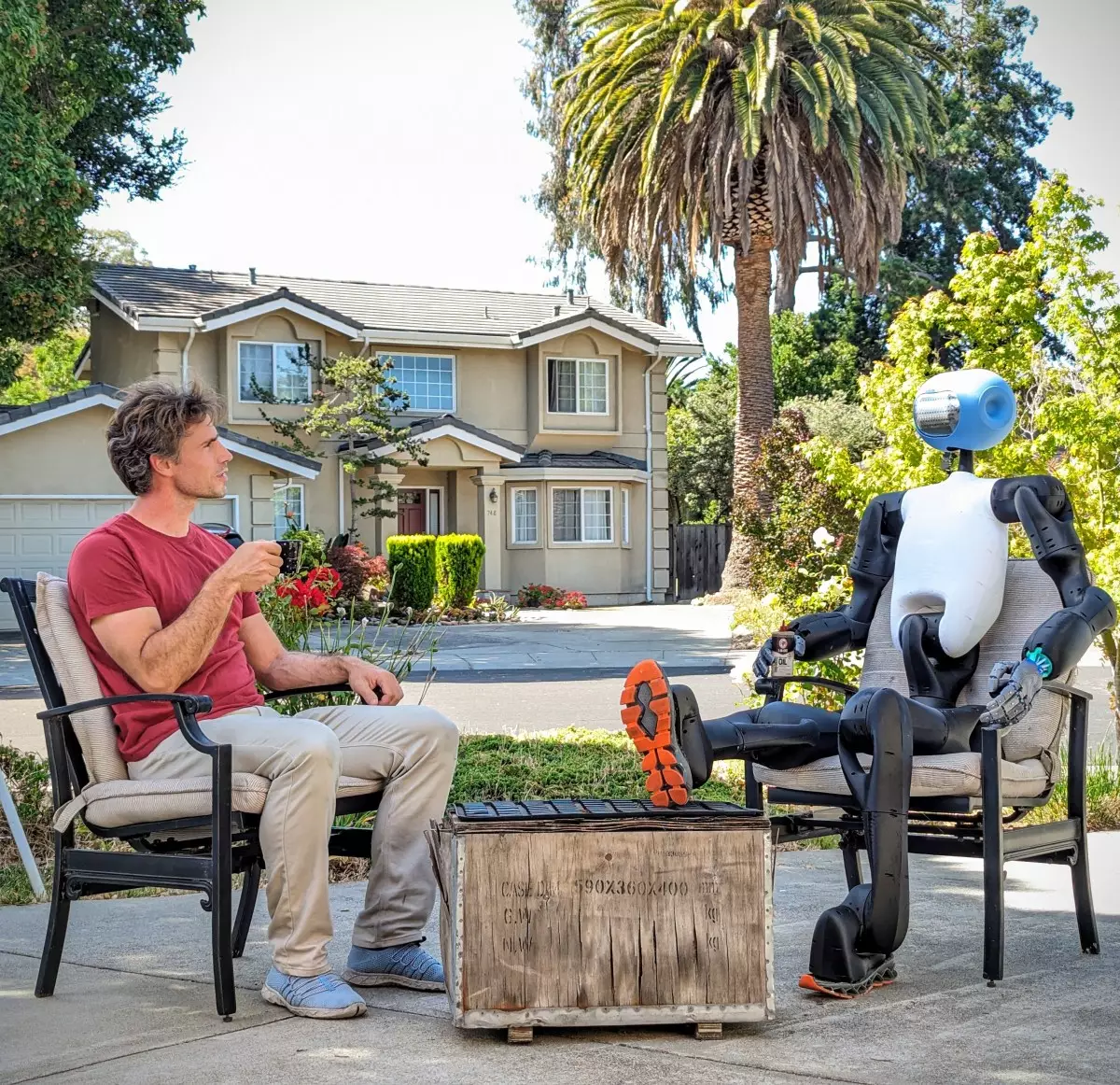Nestled within the hustle and bustle of Silicon Valley lies a treasure trove of creativity and innovation—a garage that belongs to Christoph Kohstall, where ingenuity flourishes amidst an ocean of mechanical dreams. The disarray of his workspace is an embodiment of the spirit of experimentation. With electrical components aglow and machining tools scattered around, the environment emits an air of productive chaos reminiscent of a bygone era in tech history. This space, with its distinctive gantry system, vividly represents the experimental nature of modern robotics. Here, traditional boundaries of engineering are challenged as Kohstall and his team develop their flagship project: a humanoid robot they affectionately call Mona.
Kohstall’s background adds weight to the venture; having previously played a role in the innovative Google Brain team, his credentials reassure onlookers that the chaos is meticulously curated. However, what makes Kind Humanoid’s approach particularly intriguing is their embrace of unconventional methods, such as repurposing an $80 coat rack as part of their testing apparatus—a testament to resourcefulness in a field oftentimes dominated by financially driven giants. This inclination towards a “DIY” philosophy raises questions about the impact of a grounded and humble approach within the technology-laden corridors of Silicon Valley.
The intricate collaboration with celebrated designer Yves Béhar introduces an artistic element into the world of robotics that is often overlooked. Béhar, who visited Kohstall’s garage and was immediately inspired, underscores the notion that robotics can transcend mere functionality and invite emotional engagement. His designs for Mona reflect a whimsical, almost surreal aesthetic reminiscent of the work of Belgian surrealist René Magritte. In Béhar’s vision, the robot is not just a mechanical entity; it becomes a companion that communicates emotion and intent—a departure from the cold, industrial designs often seen in humanoid robotics.
This thoughtful consideration of aesthetics serves a dual purpose. On one hand, it helps demystify the technology behind the robot by grounding it in familiar, human-like traits. On the other, it mitigates the uncanny valley effect—a psychological phenomenon that can lead to discomfort when machines appear too human. The design choice to keep Mona at a distance from perfect human likeness opens up avenues for acceptance and engagement in domestic spaces.
Kohstall’s strategic decision to focus on the domestic market, particularly in care settings for the elderly, highlights a unique position amidst a competitive landscape. While other companies chase lucrative contracts within industrial markets, Kind Humanoid embraces the substantial yet often ignored potential of home-focused robotics. With an aging population yearning for independence, the advancement of robotics in this space seems not only logical but necessary.
The decision to eschew industrial applications simplifies the operational focus for the small team, allowing them to innovate without the constraints of established norms. Kohstall’s reflection on the capabilities of humanoid robots in navigating cluttered environments, including stairs and various terrains, positions Mona as a potential asset in alleviating challenges faced by the elderly. It’s precisely this focus that distinguishes Kind Humanoid from competitors, creating a niche that, while fraught with challenges, is rich with promise.
In an era where the allure of venture capital often overshadows genuine innovation, Kohstall’s stance is refreshingly contrarian. He prioritizes creative exploration over financial infusion, emphasizing a commitment to crafty engineering rather than a relentless chase for funding. This philosophy not only fosters an environment ripe for experimentation but also empowers the team to remain adaptable and responsive to the challenges of robotics development.
The current trajectory for Kind Humanoid includes producing an initial batch of twelve prototypes, with field tests on the horizon. This iterative process—test, learn, and adapt—mirrors the resilience and creativity that define Silicon Valley’s roots, advocating a return to what initially spurred innovation in technology. By focusing on building a genuinely functional robot, Kohstall and his team aim to bridge the gap between aspirational designs and real-world application.
As we peer into the evolving world of robotics, Kind Humanoid stands out by demonstrating that innovation can thrive within constraints. Christoph Kohstall and his team remind us that the future of humanoid robots lies not just in factory efficiency or industrial application, but in forging connections within our homes. Mona, with its whimsical yet functional design, encapsulates a dream for domestic companionship that feels both futuristic and comforting.
The dance between creativity and technology, art and engineering, has the potential to redefine our living spaces through the integration of intelligent companions. Kind Humanoid’s journey reflects a bold step into uncharted territory, where the fusion of innovation and compassion could lead to a revolution in how we interact with robotics, paving the way for a more connected and supportive future.

